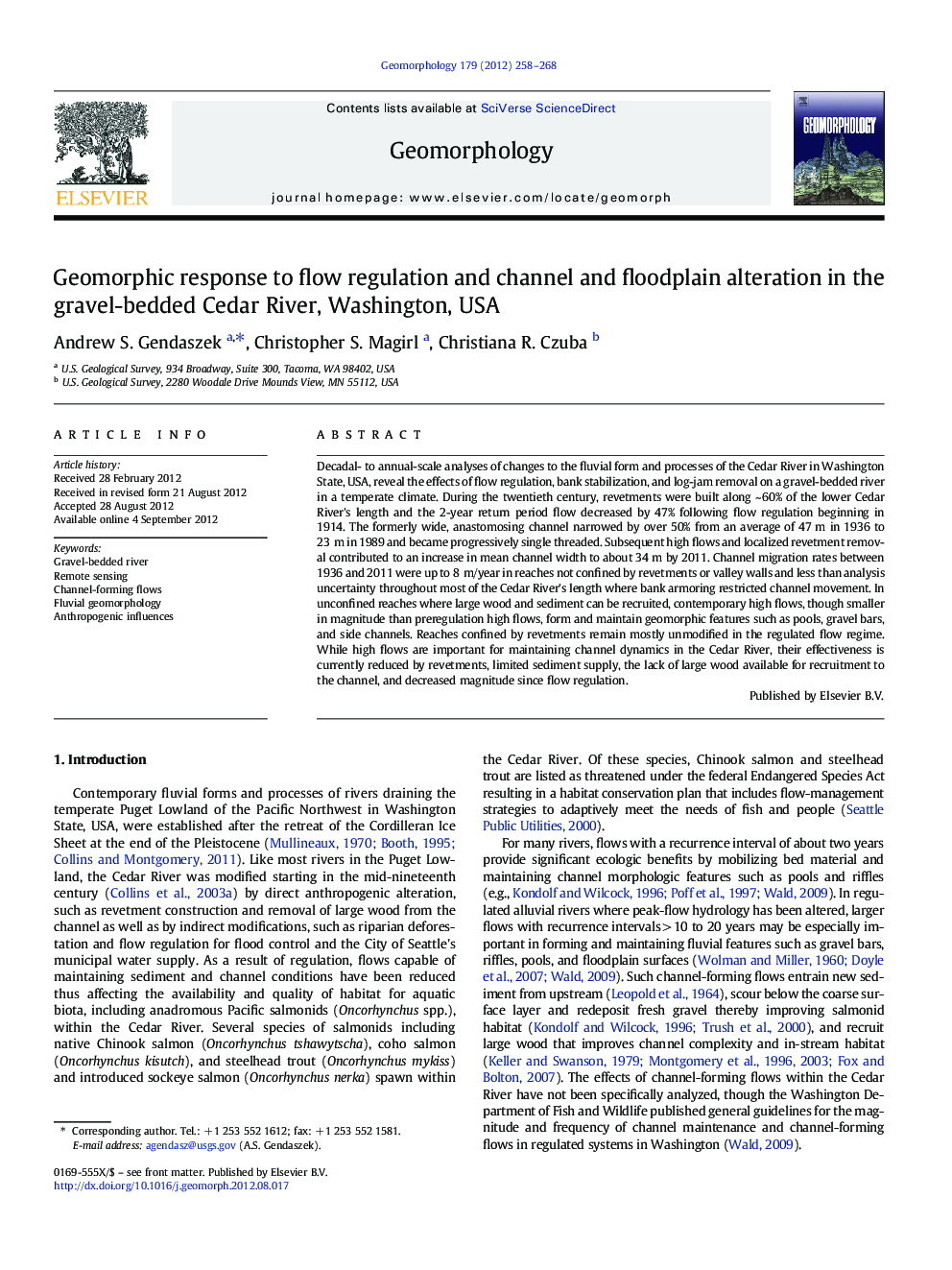| Article ID | Journal | Published Year | Pages | File Type |
|---|---|---|---|---|
| 4685068 | Geomorphology | 2012 | 11 Pages |
Decadal- to annual-scale analyses of changes to the fluvial form and processes of the Cedar River in Washington State, USA, reveal the effects of flow regulation, bank stabilization, and log-jam removal on a gravel-bedded river in a temperate climate. During the twentieth century, revetments were built along ~ 60% of the lower Cedar River's length and the 2-year return period flow decreased by 47% following flow regulation beginning in 1914. The formerly wide, anastomosing channel narrowed by over 50% from an average of 47 m in 1936 to 23 m in 1989 and became progressively single threaded. Subsequent high flows and localized revetment removal contributed to an increase in mean channel width to about 34 m by 2011. Channel migration rates between 1936 and 2011 were up to 8 m/year in reaches not confined by revetments or valley walls and less than analysis uncertainty throughout most of the Cedar River's length where bank armoring restricted channel movement. In unconfined reaches where large wood and sediment can be recruited, contemporary high flows, though smaller in magnitude than preregulation high flows, form and maintain geomorphic features such as pools, gravel bars, and side channels. Reaches confined by revetments remain mostly unmodified in the regulated flow regime. While high flows are important for maintaining channel dynamics in the Cedar River, their effectiveness is currently reduced by revetments, limited sediment supply, the lack of large wood available for recruitment to the channel, and decreased magnitude since flow regulation.
► Present and historical geomorphic processes of the Cedar River are analyzed. ► The historically wide, anastomosing Cedar River became narrow and single-threaded. ► Revetments, low wood supply, and regulated flows influenced geomorphic response. ► Geomorphic response to recent high flows is limited to a few unconfined reaches.
